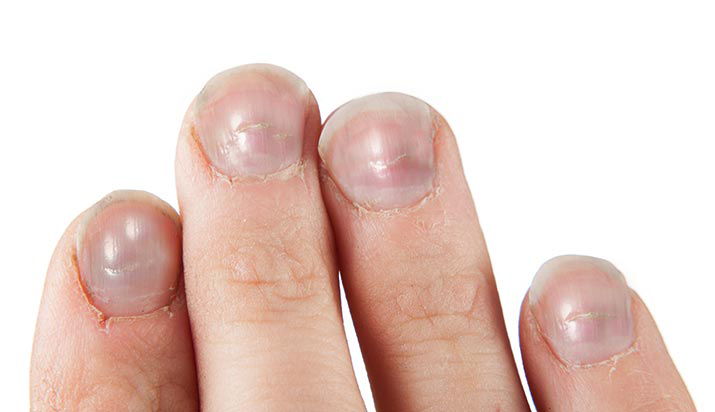Beau’s lines are horizontal ridges or dents in one or more of your fingernails or toenails. They’re a sign that an illness, injury or skin condition interrupted your nail growth. Treating the underlying cause will allow new, smooth nails to grow again.
Advertisement
Cleveland Clinic is a non-profit academic medical center. Advertising on our site helps support our mission. We do not endorse non-Cleveland Clinic products or services. Policy

Beau’s lines are grooves or dents that run across your fingernails or toenails horizontally. They can affect all your nails or just a few, such as on your thumbs and big toes.
Advertisement
Cleveland Clinic is a non-profit academic medical center. Advertising on our site helps support our mission. We do not endorse non-Cleveland Clinic products or services. Policy
Beau’s lines happen when:
Illnesses or infections can cause Beau’s lines, including:
Trauma or damage to your nail matrix can cause Beau’s lines, such as:
Chronic conditions that interfere with blood flow to your nail matrix can cause Beau’s lines, including:
Skin conditions that can cause Beau’s lines include:
If you have a severe zinc deficiency or aren’t eating enough protein, you may experience Beau’s lines. Your nail growth usually returns to normal once you receive proper nutrition again.
Advertisement
Mental and emotional stress can affect nail health and growth. Severe emotional stress, such as a divorce, death in the family or job loss, can cause Beau’s lines. Anxiety disorders are another possible cause.
Beau’s lines aren’t a disease and aren’t harmful by themselves. They’re usually a sign that you had an illness or nail damage a few weeks or months ago.
Chronic conditions that need treatment can cause them, so don’t ignore them. Work with your healthcare provider to find out the underlying cause so you can address any possible health problems.
Your healthcare provider or dermatologist may diagnose Beau’s lines by examining your nails and taking a health history. The thickness and number of Beau’s lines also provide clues about the cause:
There isn’t a treatment for Beau’s lines. But treating the underlying cause can keep them from coming back once they grow out. Your healthcare provider may recommend you:
Discuss treatment options with your healthcare provider if you have peripheral artery disease, including medications and surgery.
Beau’s lines grow out gradually after you recover or receive treatment for the underlying cause. This process takes about six months.
You can temporarily hide the ridges by applying a nail ridge filler and nail polish. Use nail products with caution, however, as some can weaken or damage nails.
If you notice Beau’s lines and don’t know what caused them, see your healthcare provider to rule out any possible health conditions. People with chronic conditions like diabetes and peripheral artery disease should talk to their healthcare provider if they notice any nail changes.
Your nails are a window into your overall health, so always mention any nail changes to your healthcare provider. Usually, Beau’s lines go away once your nails have grown out. If you treat the underlying cause, you’ll likely see smooth nails appear again.
Advertisement
Cleveland Clinic’s primary care providers offer lifelong medical care. From sinus infections and high blood pressure to preventive screening, we’re here for you.

Last reviewed on 05/03/2022.
Learn more about the Health Library and our editorial process.